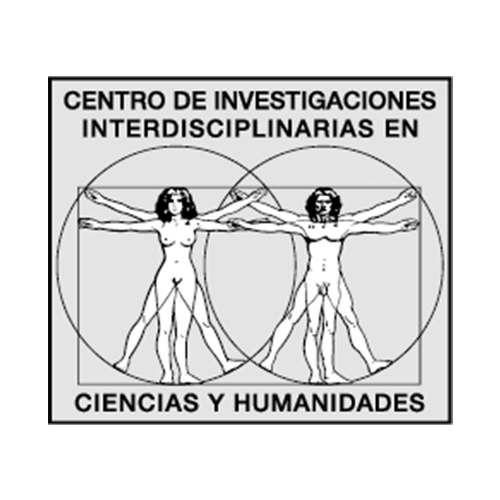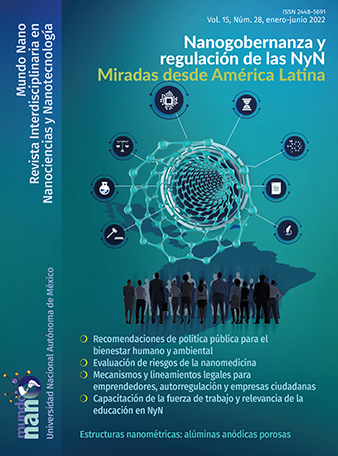Nanotechnology on the periphery: the cases of Costa Rica, Uruguay and Venezuela
Main Article Content
Abstract
This paper addresses nanotechnology developments in three Latin American countries: Costa Rica, Uruguay and Venezuela. It aims both to characterize the field in these countries and to develop a first comparative approach. The methodology adopted included documentary analysis and analysis of specialized databases, mainly the StatNano database. The article describes and compares the incorporation of nanotechnology in the public agenda and policies; policy instruments, financing, governance and nanosecurity. Moreover, research and development (R&D) activities are characterized in terms of scientific production and technological innovation. The results of the study showed that the last two decades have been the time frame of a process of increasing institutionalization and internationalization of nanotechnology in this group of countries, where this field has primarily followed national patterns but faces common challenges.
Downloads
Article Details

Mundo Nano. Revista Interdisciplinaria en Nanociencias y Nanotecnología por Universidad Nacional Autónoma de México se distribuye bajo una Licencia Creative Commons Atribución-NoComercial 4.0 Internacional.
Basada en una obra en http://www.mundonano.unam.mx.
References
ANII. (2017). Indicadores de ciencia, tecnología e innovación en Uruguay. Unidad de Evaluación y Monitoreo 2017. https://www.anii.org.uy/institucional/documentos-de-interes/21/boletin-de-indicadores/
Chiancone, A. (2012). Nanociencias y nanotecnologías en Uruguay: áreas estratégicas y temáticas grupales. En Guillermo Foladori, Noela Invernizzi, y Edgar Záyago (eds.), Perspectivas sobre el desarrollo de las nanotecnologías en América Latina. México: M.A. Porrúa, 201-210.
Chiancone, A. y Martínez Larrechea, E. (2015). Caracterización del desarrollo de las nanotecnologías en Uruguay y el Plan Piloto de UNITAR. En: Guillermo Foladori; Anwar Hasmy, Noela Invernizzi y Edgar Záyago Lau (eds.), Nanotecnologías en América Latina: trabajo y regulación, 95-105. Ciudad de México: Miguel Ángel Porrúa.
Belli, S, y Balta, J. (2019). Mapeo de las publicaciones científicas entre América Latina, el Caribe y la Unión Europea. América Latina Hoy, 82: 7-41. DOI: https://doi.org/10.14201/alh201982943
Cueto, M. (1989). Excelencia científica en la periferia. Actividades científicas e investigación biomédica en el Perú, 1890-1950. Lima: GRADE/ CONCYTEC.
De la Vega, I., Suárez, M., Blanco, F., Troconis, A. y Aponte, G. (2008). Las tecnologías nanoscópicas en los centros y las periferias. El caso de los nanomateriales en Venezuela. En Foladori, G. e Invernizzi, N. (coords.), Las nanotecnologías en América Latina. México: Miguel Ángel Porrúa, 125-146.
Diez, E., Freites, Y., García-Pérez, M., Ordóñez, L., Pineda, J., Requena, J. y Romero, S. (2020). Venezuelan research community migration: impacts and public policy implications. Banco Interamericano de Desarrollo. https://publications.iadb.org/en/venezuelan-research-community-migration-impacts-and-public-policy-implications DOI: https://doi.org/10.18235/0002776
Foladori, G. e Invernizzi, N. (coords.). (2008). Las nanotecnologías en América Latina. México: Miguel Ángel Porrúa. DOI: https://doi.org/10.4067/S0718-65682009000200013
Foladori, G., Invernizzi, N. y Záyago Lay, E. (orgs.). (2012). Perspectivas sobre el desarrollo de las nanotecnologías en América Latina. México: Miguel Ángel Porrúa. DOI: https://doi.org/10.1590/S1517-45222012000200011
Foladori, G. e Invernizzi, N. (2013). Inequality gaps in nanotechnology development in Latin America. Journal of Arts and Humanities, 2 (3): 35-45.
Foladori, G., Invernizzi, N. y Záyago Lau, E. (2016) Investigación y mercado de nanotecnologías en América Latina. México: Miguel Ángel Porrúa.
Hannerz, U. (2015). Center–periphery relationships. En James D. Wright (ed.), International Encyclopedia of the Social & Behavioral Sciences. Elsevier, 308-311. DOI: https://doi.org/10.1016/B978-0-08-097086-8.12031-8
Invernizzi, Noela, Hubert, Matthieu y Vinck, Dominique. (2014). Nanoscience and nanotechnology: how an emerging area on the scientific agenda of the core countries has been adopted and transformed in Latin America. En Eden Medina, Ivan da Costa Marques y Christina Holmes (eds.), Beyond imported magic. Essays on science, technology, and society in Latin America. Cambridge, Massachusetts, Londres: The MIT Press, 223-242. DOI: https://doi.org/10.7551/mitpress/9780262027458.003.0011
Kay, L. y Shapira P. (2009). Developing nanotechnology in Latin America. Journal of Nanoparticle Research, 11(2): 259-278. https://doi.org/10.1007/s11051-008-9503-z DOI: https://doi.org/10.1007/s11051-008-9503-z
Kreimer, P. (2010). Ciencia y periferia. Nacimiento, muerte y resurrección de la biología molecular en la Argentina. Buenos Aires: Eudeba.
López S. Trocel C., Hasmy A. y Vessuri, H. (2015). Estado actual de la nanociencia y nanotecnología en Venezuela. En Guillermo Foladori; Anwar Hasmy, Noela Invernizzi y Edgar Záyago Lau (eds.) Nanotecnologías en América Latina: trabajo y regulación. México: Miguel Ángel Porrúa, 111-134.
López, S. Robles-Belmont, E. y Pacheco, L. (2020). La investigación en nanoescala en Venezuela. A diez años de la propuesta del Plan Nacional de Nanotecnología. En Edgar Záyago Lau Guillermo Foladori y Noela Invernizzi (coords.), Relevancia social de las nanotecnologías en América Latina. México: Miguel Ángel Porrúa,157-177.
MICITT. (2018). X Informe de Indicadores Nacionales de Ciencia, Tecnología e Innovación. Costa Rica, San José: MICITT.
Matharan, G. (2017). La dinámica centro‒periferia en el estudio de la ciencia en América Latina: notas para una reflexión historiográfica sobre la Argentina. El Hilo de la Fábula, (16): 33-48. https://doi.org/10.14409/hf.v0i16.6279 DOI: https://doi.org/10.14409/hf.v0i16.6279
Méndez, E. (2015). Regulación de nanomateriales: visión de Uruguay. Presentación en el Taller Técnico sobre Nanotecnología y Nanomateriales, enfoque en Nanoseguridad América Latina y Caribe. Bogotá, Colombia, 22-24 June 2015. https://www.unitar.org/media/2495
Mercado, A., Ávalo, I., Sánchez-Rose, I., Cervilla, M., Autora y Vessuri, H. (2020). Doing research in Venezuela. Science, technology and innovation capabilities to overcome the crisis in Venezuela. Canadá, International Development Research Center (IDRC) y Global Development Network (GDN). http://www.gdn.int/sites/default/files/u115/Venezuela%20Report%20Spanish%20with%20ISBN.pdf
ONCTI. (2016). Indicadores venezolanos de ciencia, tecnología e innovación. Boletín año 2016. Observatorio Nacional de Ciencia, Tecnología e Innovación. Caracas, Ediciones ONCTI.
Pohl Consulting & Asociados. (2016). Áreas de vacancia en I+D según la perspectiva del Sector Productivo. http://www.anii.org.uy/institucional/documentos-de-interes/25/consultoria-fortalecimiento-del-sistema-nacional-de-innovacion
Polo Tecnológico. (s/f). ¿Qué es el Polo Tecnológico de Pando? http://www.polotecnologico.fq.edu.uy/es/que-es-el-polo-tecnologico-de-pando
RICYT. (2008). La nanotecnología en Iberoamérica. Situación actual y tendencias. http://www.ricyt.org/wp-content/uploads/2019/09/Estado_2008_03Nano.pdf
RICYT. (2020). Uruguay 2007-2016. Recursos financieros I+D. http://dev.ricyt.org/ui/v3/bycountry.html?country=UY&subfamily=CTI_IMD
StatNano. (28/7/2021a). Nanotechnology publications (article). https://statnano.com/report/s29
StatNano. (28/7/2021b). National priority in nanoscience. https://statnano.com/report/s41
StatNano. (28/7/2021c). Share of Q1 nanotechnology publications (percent). https://statnano.com/report/s143
StatNano. (28/7/2021d). Share of top 10% nano-articles of Q1 nano-articles (percent). https://statnano.com/report/s145
StatNano. (28/7/2021e). Average citation per nanotechnology article (citations). https://statnano.com/report/s55
StatNano. (28/7/2021f). Share of international collaboration in nanoscience (percent). https://statnano.com/report/s82
StatNano. (28/7/2021g). Nanotechnology patents in EPO (patent). https://statnano.com/report/s102
StatNano. (28/7/2021h). Nanotechnology patents in USTPO (patent). https://statnano.com/report/s103
Vega Baudrit, J. (2016). Plan Estratégico de Desarrollo 2016-2020. San José: LANOTEC.
World Bank. (s/f). GDP per capita (current US$). https://data.worldbank.org/indicator/NY.GDP.PCAP.KD





